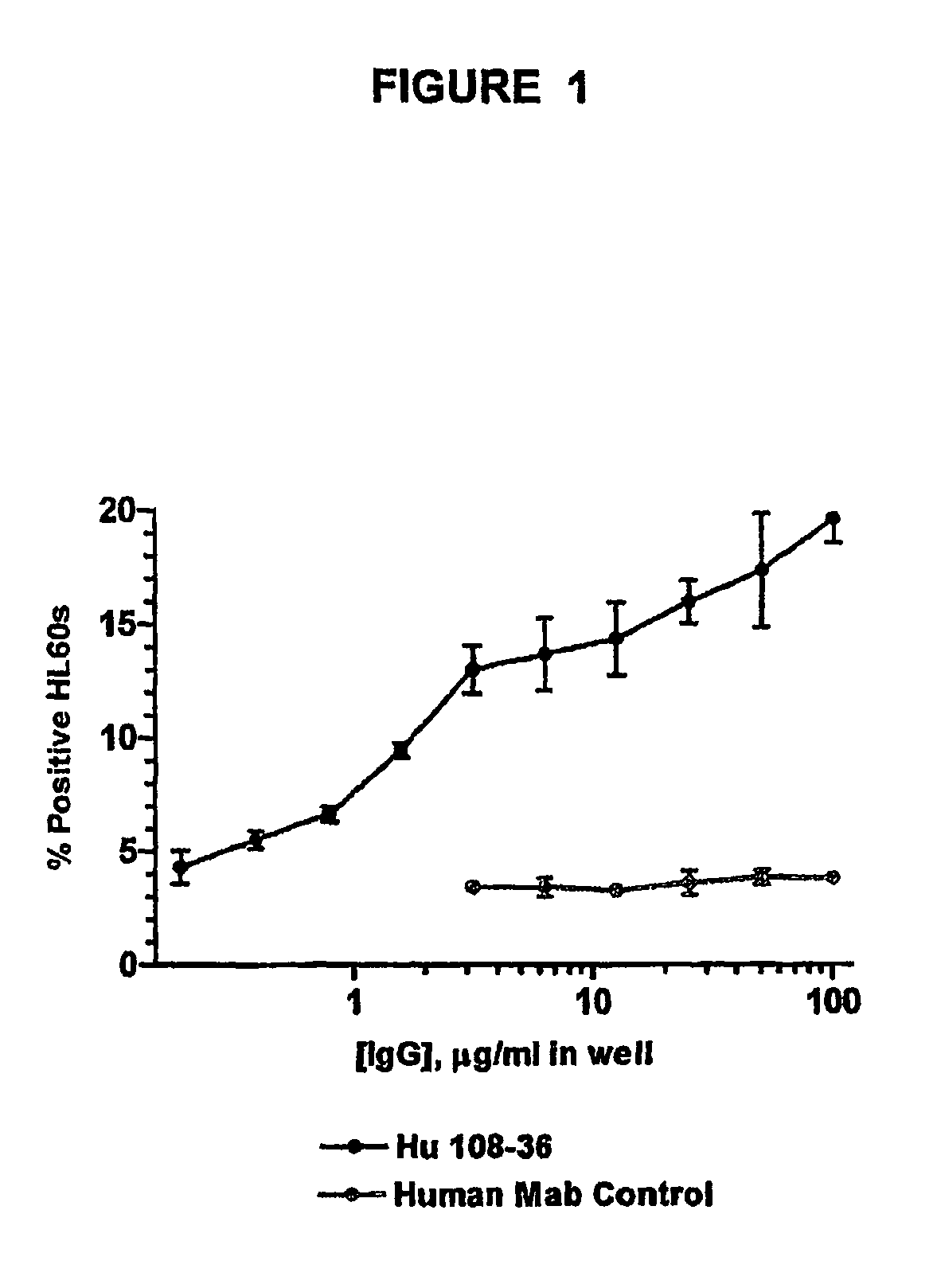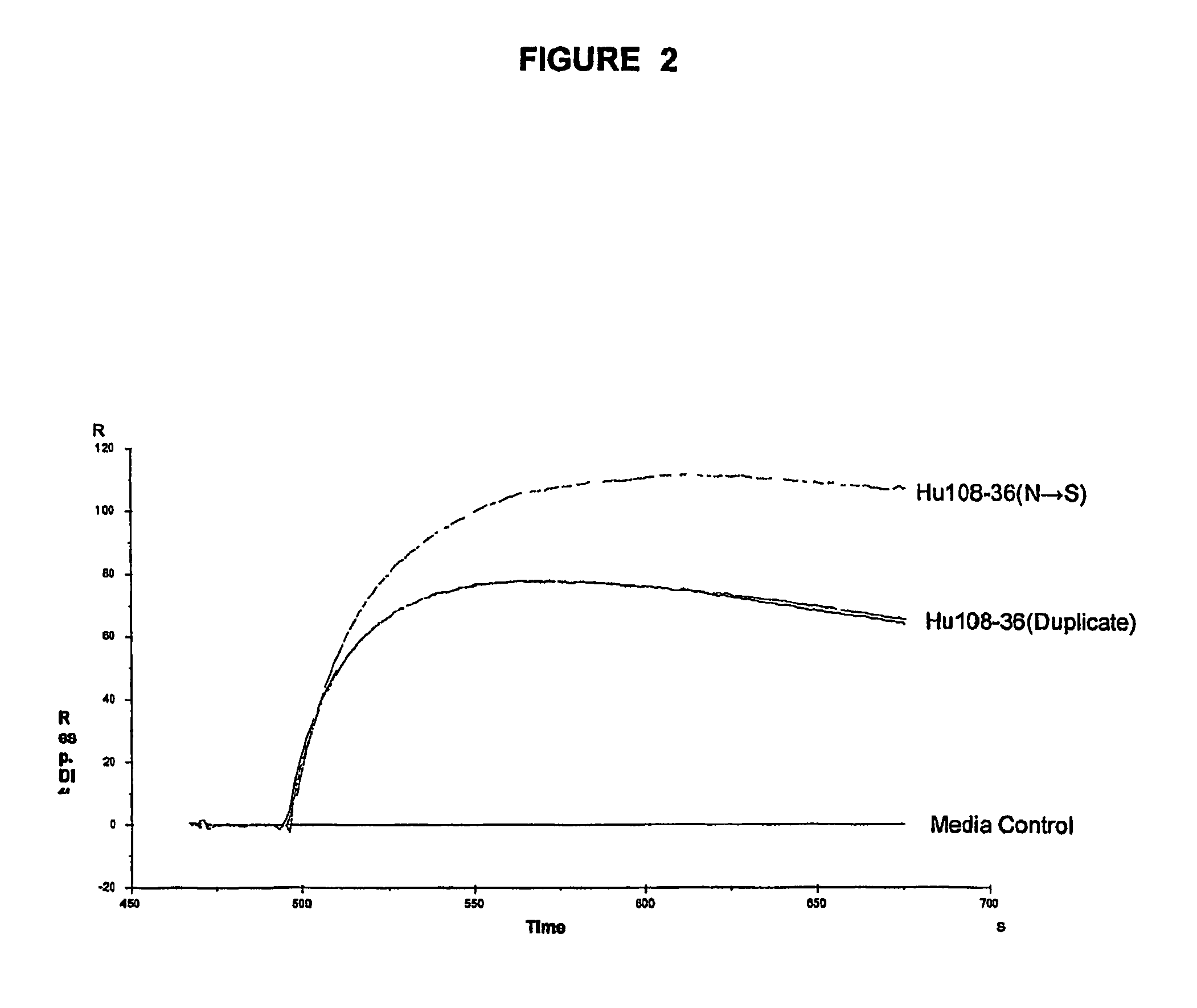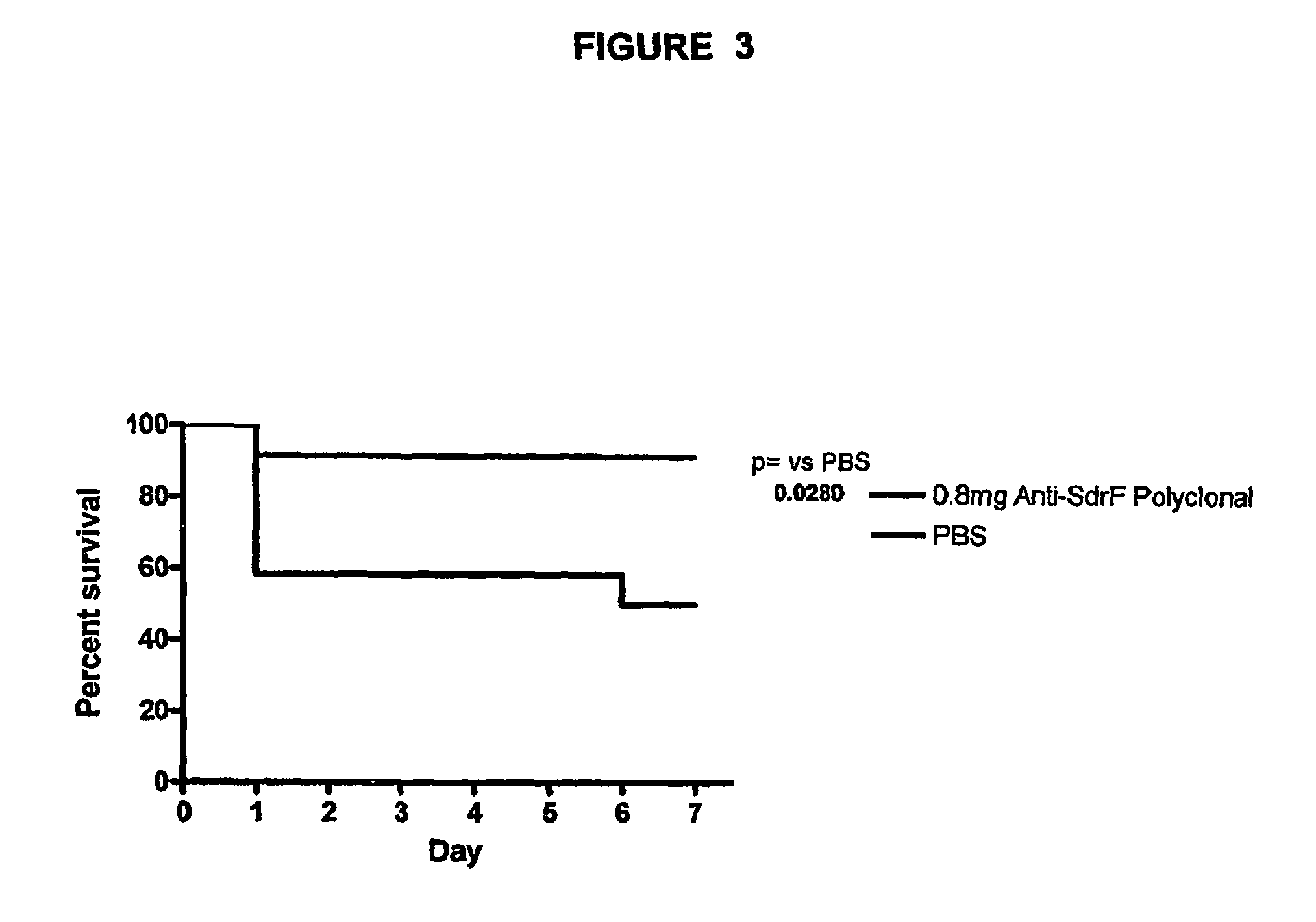Monoclonal antibodies recognizing a coagulase-negative staphylococcal protein
a staphylococcal protein and monoclonal antibody technology, applied in the field of microorganisms, molecular biology, immunology, can solve the problems of more serious invasive infections, over-hospital stay of 8 days, and cost an estimated $6,000.00 per case, and achieve the effect of treating, preventing or diagnosing staphylococcal infections with high affinity
- Summary
- Abstract
- Description
- Claims
- Application Information
AI Technical Summary
Benefits of technology
Problems solved by technology
Method used
Image
Examples
example 1
Expression and Purification of SdrF Proteins
[0050]To characterize the utility of this invention, domains of the SdrF protein were cloned, expressed recombinantly and purified. SdrF N1N2N3 (52-679) represents the putative A domain of the SdrF gene. SdrF N2N3 (361-679) represents the putative sub-domain required for ECM binding based on Sdr family homology. SdrF N2 (361-517) and N3 (517-679) represent sub-domains of the putative ECM binding domain.
[0051]The actual sequence of the SdrF A domain (subregions N1, N2 and N3) is as follows:
SdrF N1N2N3 (52-679):
[0052]
Nucleotide Sequence(SEQ ID NO: 1)GCTGAAGACAATCAATTAGAATCAGCTTCAAAAGAAGAACAGAAAGGTAGTCGTGATAATGAAAACTCAAAACTTAATCAAGTCGATTTAGACAACGGATCACATAGTTCTGAGAAAACAACAAATGTAAACAATGCAACTGAAGTAAAAAAAGTTGAAGCACCAACGACAAGTGACGTATCTAAGCCTAAAGCTAATGAAGCAGTAGTGACGAATGAGTCAACTAAACCAAAAACAACAGAAGCACCAACTGTTAATGAGGAATCAATAGCTGAAACACCCAAAACCTCAACTACACAACAAGATTCGACTGAGAAGAATAATCCATCTTTAAAAGATAATTTAAATTCATCCTCAACGACATCTAAAGAAAGTAAAACAGACGAACATTCTACTAAG...
example 2
Immunization Strategies for Monoclonal Antibody Production
[0062]With the goal of generating and characterizing monoclonal antibodies (mAbs), strategies were formulated to generate mAbs against SdrF that were of high affinity, able to interrupt or restrict the binding of ECM proteins to SdrF and demonstrate therapeutic efficacy in vivo.
[0063]E. coli expressed and purified SdrF (N1N2N3) protein was used to generate a panel of murine monoclonal antibodies. Briefly, a group of Balb / C mice received a series of subcutaneous immunizations of 1-10 mg of protein in solution or mixed with adjuvant.
[0064]Seven days after each boost, serum was collected and titered in ELISA assays against MSCRAMMs or on whole cells (S. epidermidis). Three days after the final boost, the spleen was removed, teased into a single cell suspension and the lymphocytes harvested. The lymphocytes were then fused to a P3X63Ag8.653 myeloma cell line (ATCC #CRL-1580). Cell fusion, subsequent plating and feeding were perfo...
example 3
Screening and Selection of Anti-SdrF Monoclonal Antibodies
[0065]Hybridomas generated from the fusion were screened for specific anti-SdrF antibody production using a standard ELISA assay. Positive clones were expanded and tested further for activity in a whole bacterial cell binding assay by flow cytometry and SdrF binding by Biacore analysis.
ELISA Analysis
[0066]Immulon 2-HB high-binding 96-well microtiter plates (Dynex) were coated with 1 μg / well of SdrF N1N2N3, N2N3, N2 or N3 in 1×PBS, pH 7.4 and incubated for 2 hours at room temperature. All washing steps in ELISAs were performed three times with 1×PBS, 0.05% TWEEN-20 wash buffer. Plates were washed and blocked with a 1% BSA solution at room temperature for 1 hour before hybridoma supernatant samples were added to wells. Plates were incubated with samples and relevant controls such as media alone for one hour at room temperature, washed, and goat anti-mouse IgG-AP (Sigma) diluted 1:5000 in 1×PBS, 0.05% TWEEN-20, 0.1% BSA was used...
PUM
| Property | Measurement | Unit |
|---|---|---|
| pH | aaaaa | aaaaa |
| flow rate | aaaaa | aaaaa |
| concentration | aaaaa | aaaaa |
Abstract
Description
Claims
Application Information
 Login to View More
Login to View More - R&D
- Intellectual Property
- Life Sciences
- Materials
- Tech Scout
- Unparalleled Data Quality
- Higher Quality Content
- 60% Fewer Hallucinations
Browse by: Latest US Patents, China's latest patents, Technical Efficacy Thesaurus, Application Domain, Technology Topic, Popular Technical Reports.
© 2025 PatSnap. All rights reserved.Legal|Privacy policy|Modern Slavery Act Transparency Statement|Sitemap|About US| Contact US: help@patsnap.com



